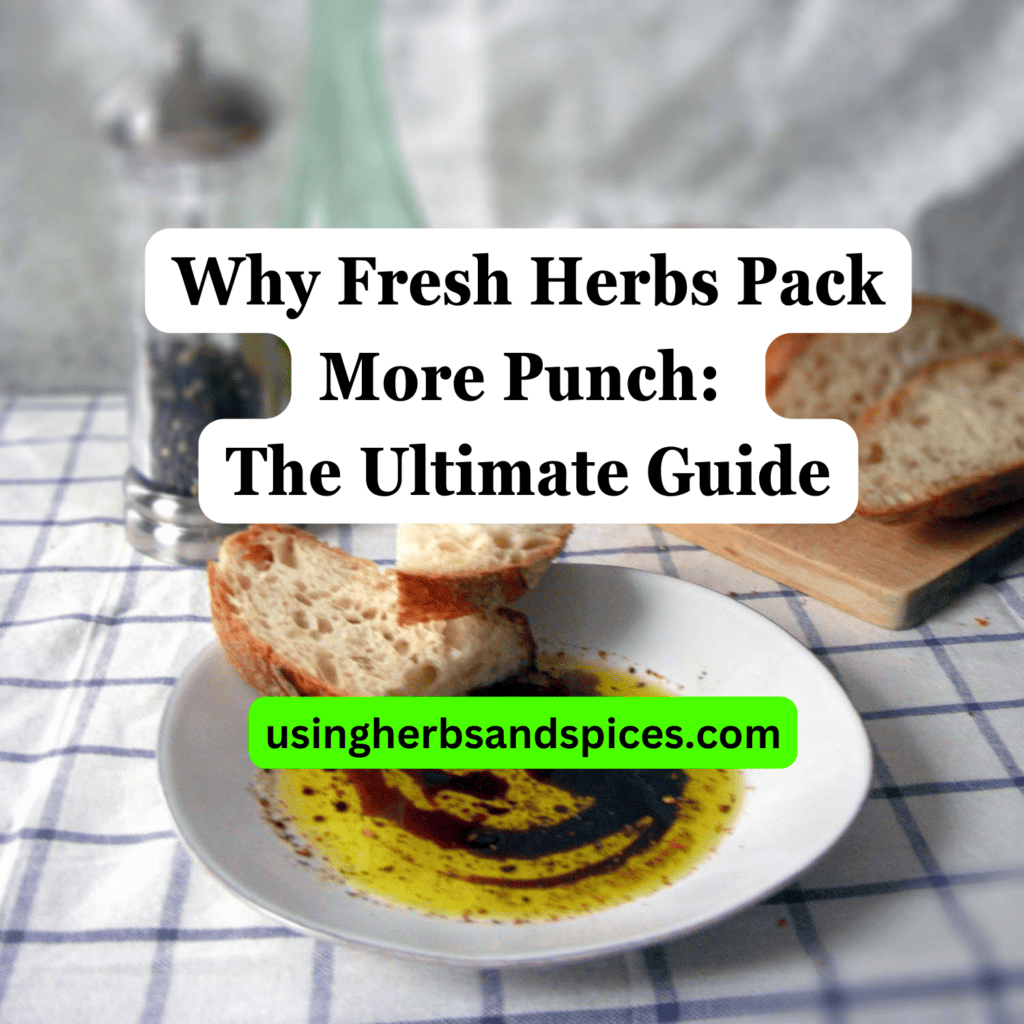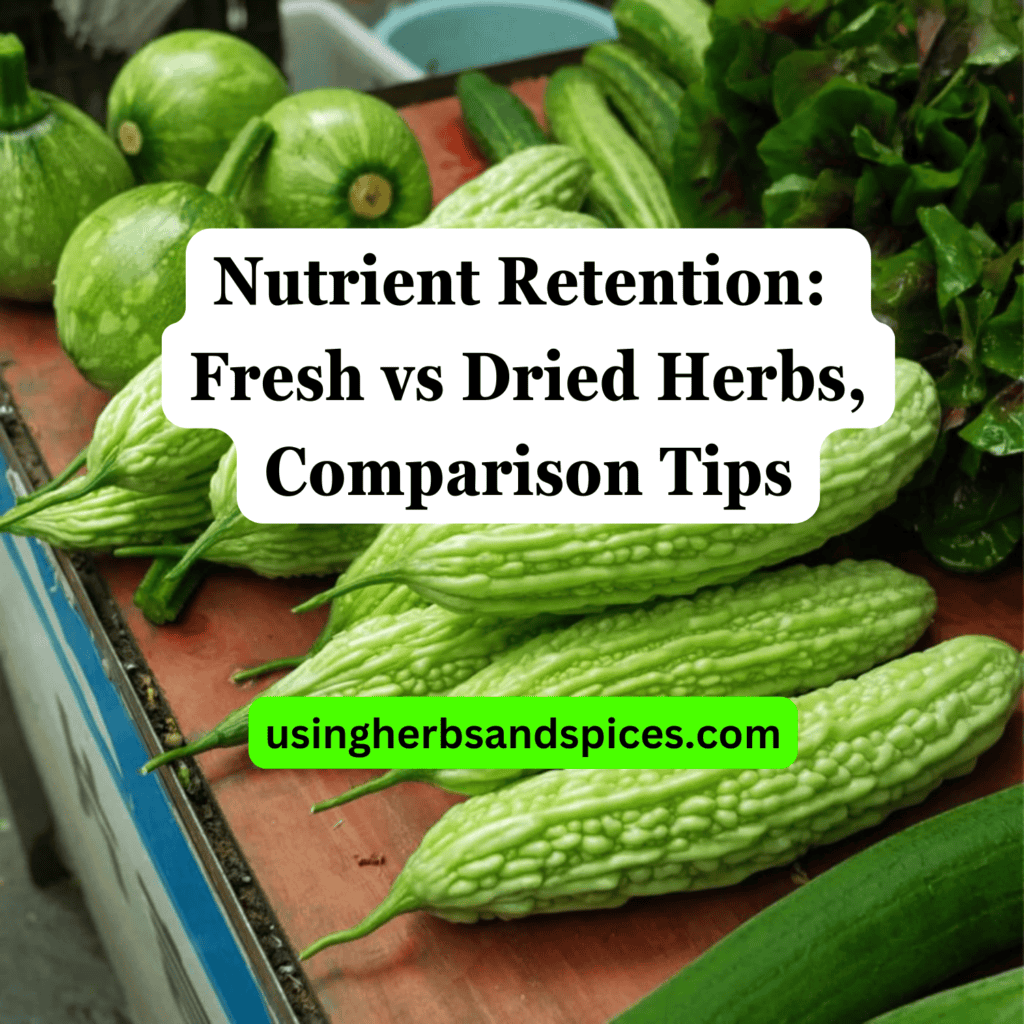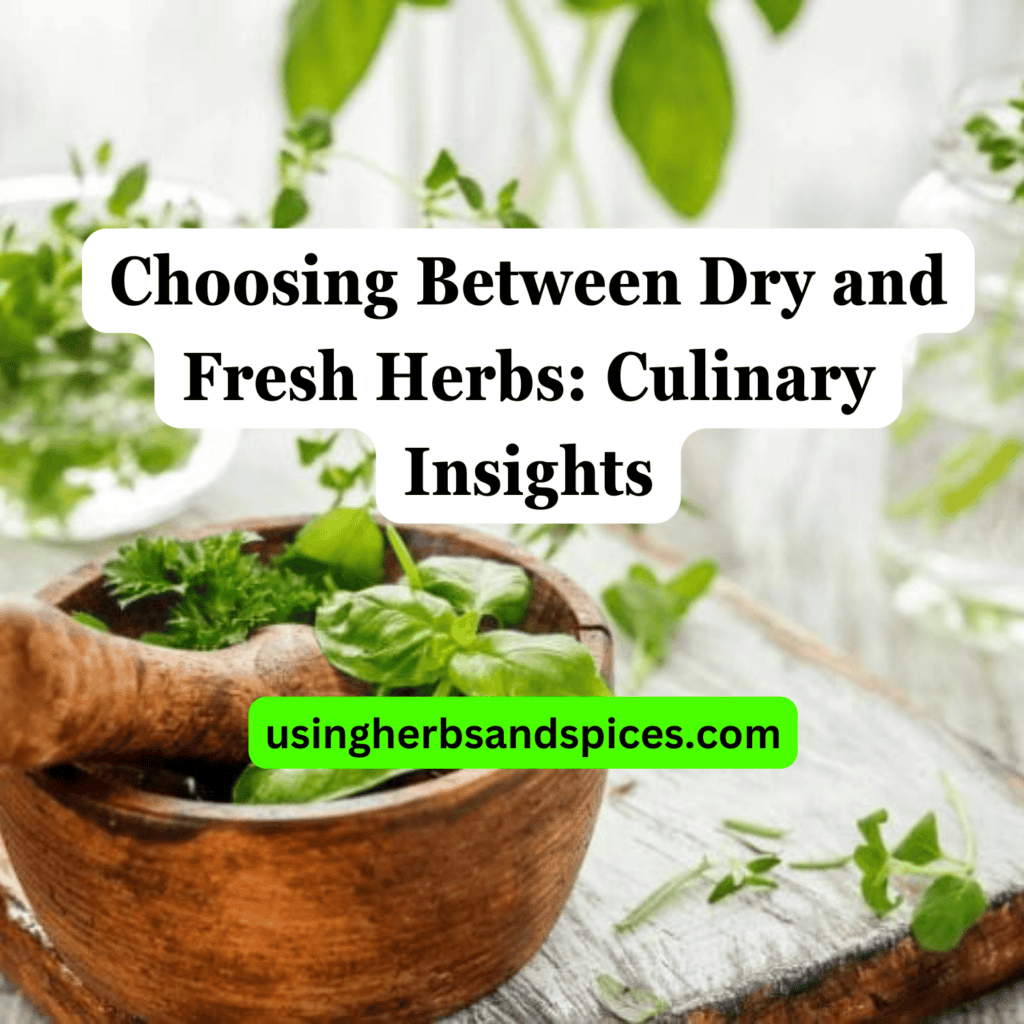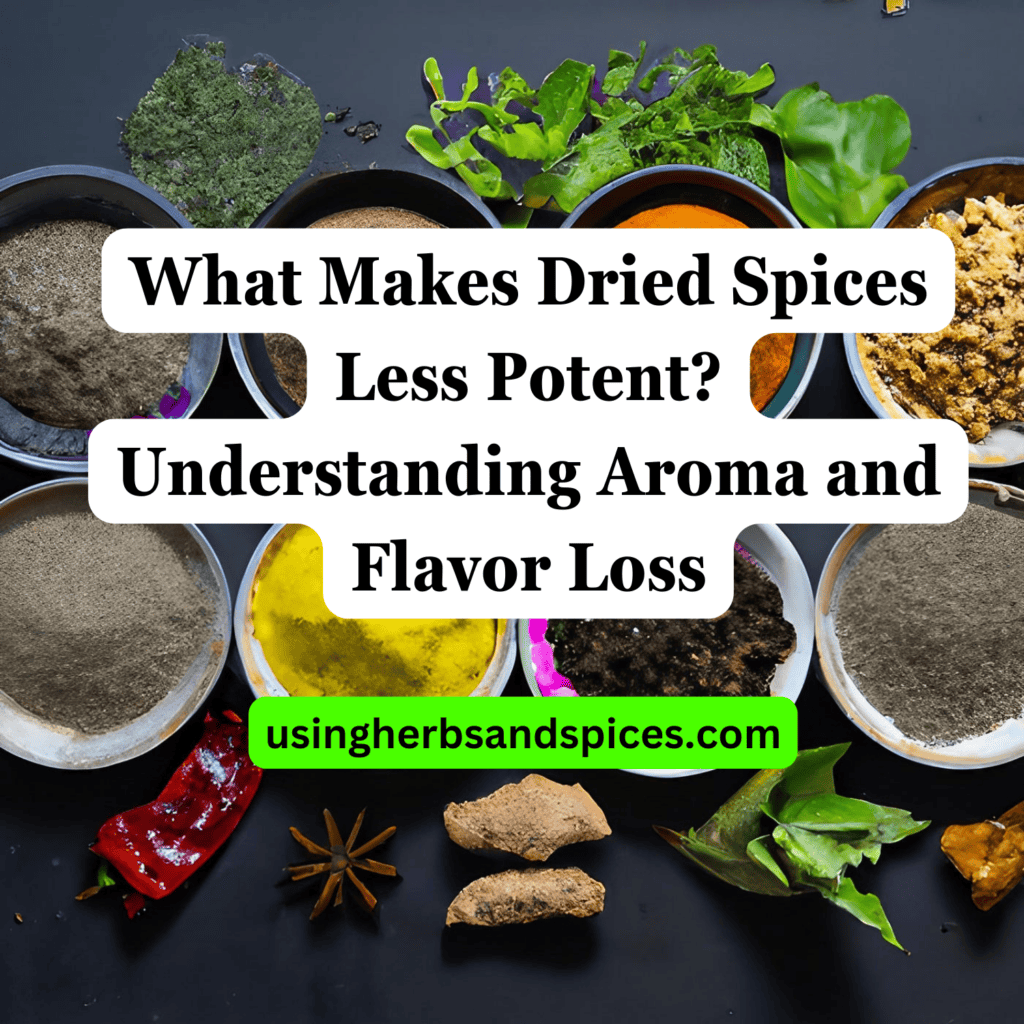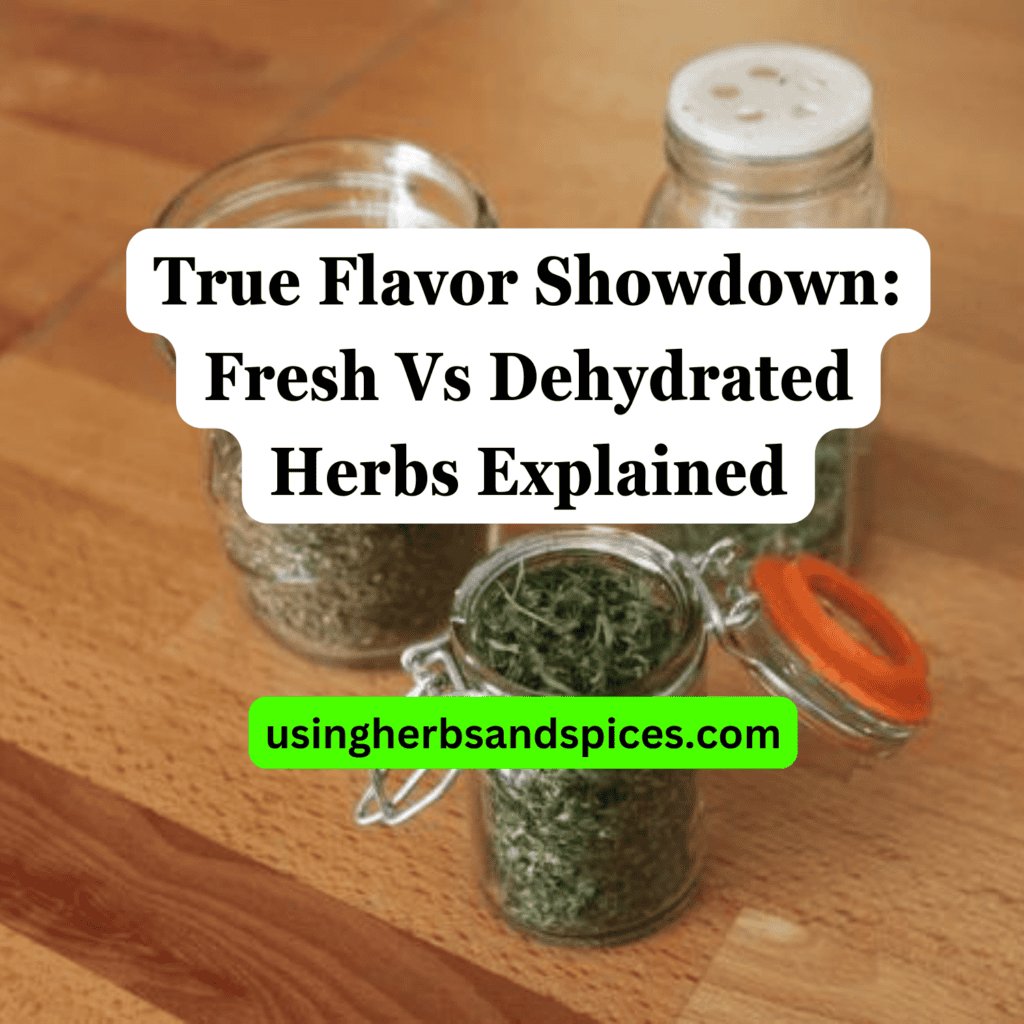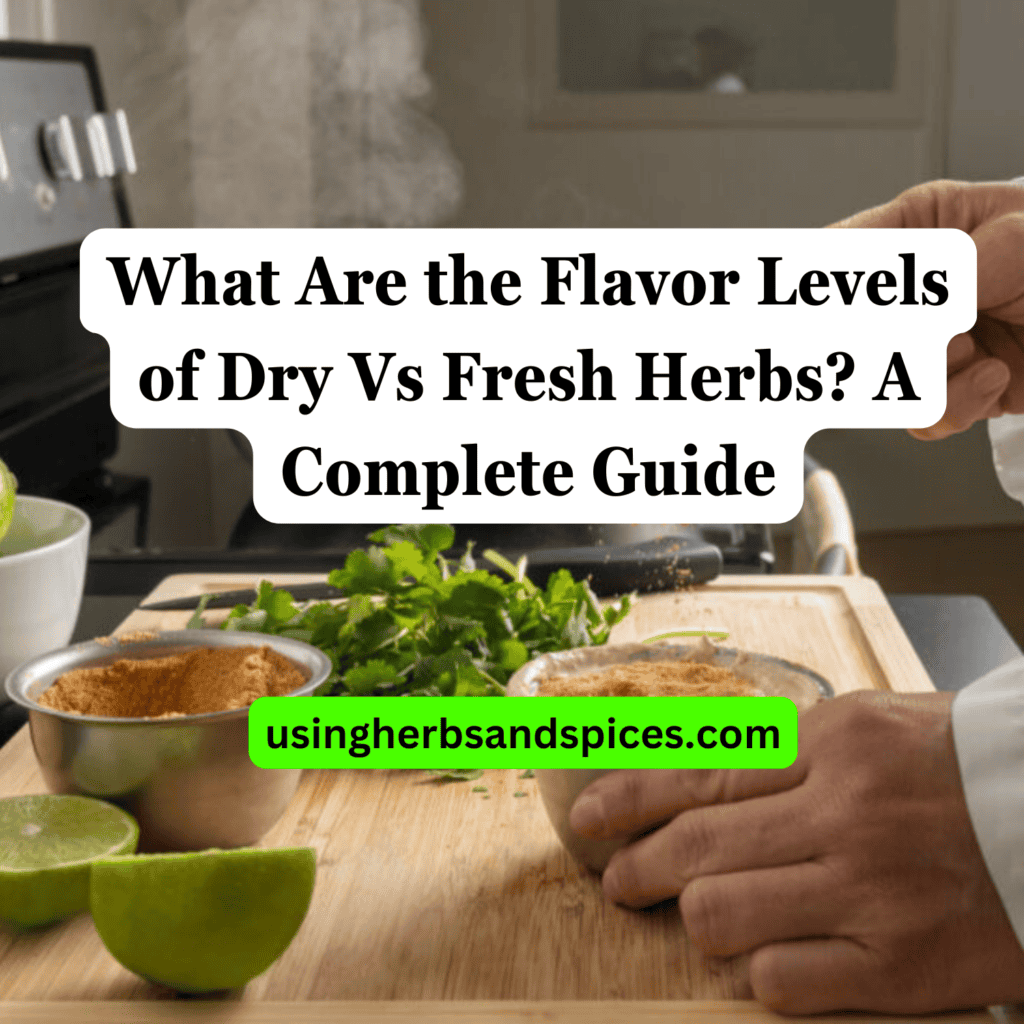SUMMARY: Mastering when to use dried or fresh herbs can make or break a dish, with dried herbs offering concentrated flavors and a longer shelf life, while fresh herbs bring brightness and vibrancy to meals. Knowing how to substitute one for the other is a key skill in any chef’s arsenal.
Ever find yourself puzzling over whether to use dried or fresh herbs in your cooking?
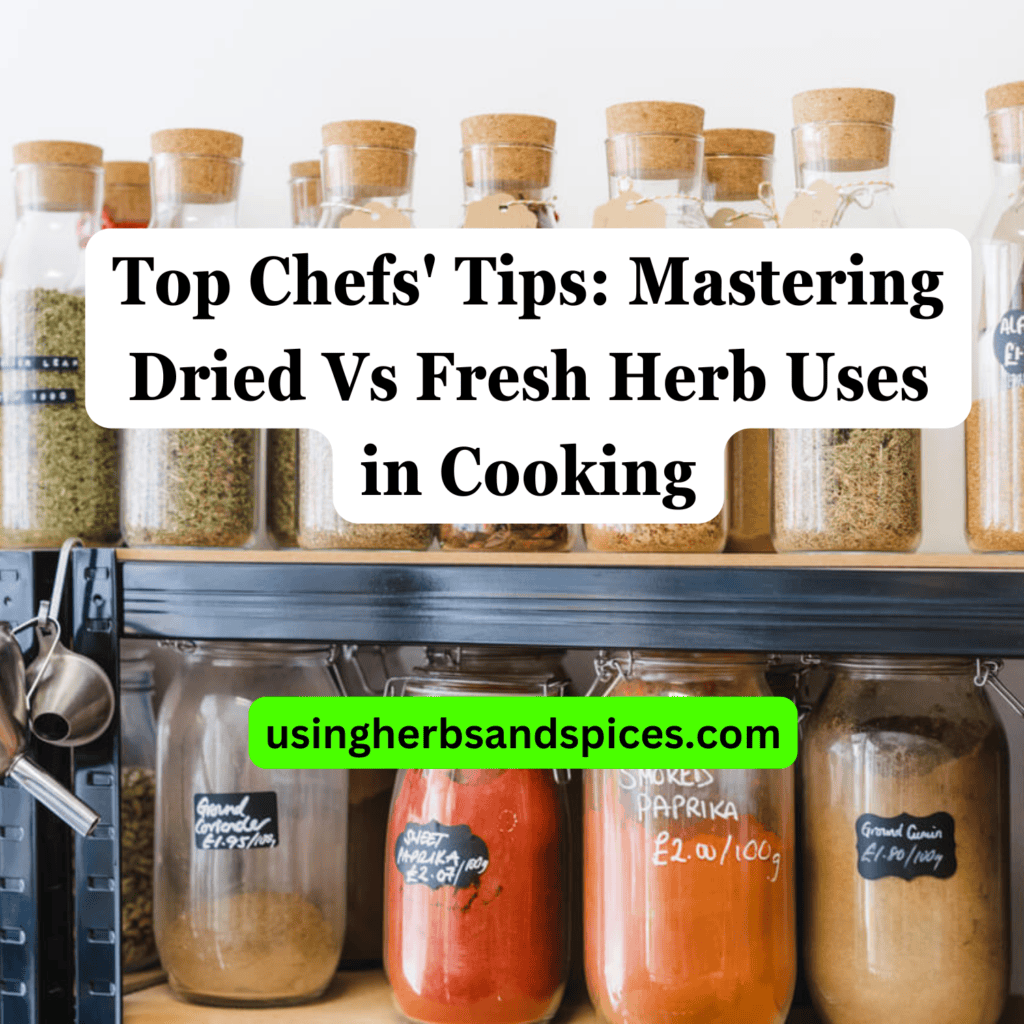
This guide is crafted to demystify that very choice.
- The basics of herb usage in cooking
- Benefits of using dried herbs
- When to choose fresh herbs
- Expert tips for substituting between dried and fresh herbs
Continue reading to arm yourself with the knowledge to make informed decisions about using herbs, elevating your culinary game.
The Basics of Herb Usage in Cooking
Herbs, whether fresh or dried, are the soul of culinary creations, adding depth and complexity with their varied flavors and aromas. However, knowing when to use which type can seem like an art form. Fresh herbs, with their vibrant color and lively flavor, are often added towards the end of cooking to preserve their essence. Dried herbs, on the other hand, offer a more concentrated taste and are usually incorporated during the earlier stages of cooking, allowing their flavors to meld and permeate the dish.
Understanding the fundamental differences in flavor intensity is crucial. As a general rule of thumb, because dried herbs are more potent, they should be used in smaller quantities. The typical ratio is one part dried to three parts fresh. This conversion ensures that the dried herbs do not overpower the dish but instead complement the other ingredients.
Bearing these tips in mind, you can begin to navigate the use of herbs in your cooking with greater confidence and creativity, enhancing dishes with the appropriate herbal notes that they deserve.
Benefits of Using Dried Herbs
Dried herbs offer several benefits that make them indispensable in the kitchen. One of their primary advantages is the intensity of flavor they bring to dishes. Due to the dehydration process, dried herbs have a more concentrated flavor, meaning a smaller quantity can often achieve the desired taste compared to fresh herbs. This makes them especially suitable for recipes that require cooking for longer periods, as they release their flavors gradually.
Additionally, dried herbs boast an extended shelf life, ensuring they remain a staple in your pantry ready for use anytime. Properly stored in airtight containers and kept away from direct sunlight, dried herbs can retain their potency for up to a year. This not only reduces food waste but also proves to be cost-effective in the long run. The convenience of dried herbs cannot be overstated; they are always at hand, eliminating the need for last-minute trips to the store for fresh herbs.
Moreover, dried herbs are versatile and can be incorporated into a wide array of cuisines and dishes. From soups and stews to marinades and dressings, they blend seamlessly, imparting deep flavors. Their economic and practical benefits, coupled with their culinary prowess, make dried herbs a valuable component of the cooking process.
When to Choose Fresh Herbs
Fresh herbs are a cornerstone of flavor in the culinary world, introducing brightness and complexity that their dried counterparts can’t quite match. They are particularly irreplaceable in dishes where their freshness can be a central theme, such as in salads, salsas, and most garnishes. For example, the fresh taste of cilantro leaves is pivotal in a homemade salsa, bringing a zesty, clean flavor that dried cilantro simply cannot provide.
Additionally, fresh herbs are often used in the final stages of cooking or as a garnish on dishes, infusing an aroma and flavor that is distinctively vibrant. Dishes that benefit from the addition of fresh herbs include pastas, pizzas, and oil-based dressings. In these cases, the heat is gentle or indirect, preserving the herbs’ essence and color, thus adding not only to the taste but also to the visual appeal of the dish.
It’s also worth noting that, in some culinary traditions, fresh herbs play an essential role in the identity of the cuisine itself. For instance, Vietnamese Pho wouldn’t be the same without a handful of fresh basil, mint, or cilantro added right before serving. Such instances highlight not just the flexibility of fresh herbs but also their cultural significance in cooking.
Expert Tips for Substituting Between Dried and Fresh Herbs
Navigating between dried and fresh herbs can be simplified with a few professional tips. A common guideline is the “1-to-3 ratio,” meaning one part dried herb equals three parts fresh due to the concentration of flavors in dried herbs. However, this ratio can vary based on the herb’s potency, with more potent herbs requiring slight adjustments.
Timing is also crucial when substituting. Dried herbs should be added at the beginning of the cooking process to allow their flavors to infuse throughout the dish. In contrast, fresh herbs generally provide the best flavor when added towards the end of cooking or as a garnish. This approach avoids overcooking the herbs, preserving their vibrant color and delicate flavors.
Additionally, understanding the characteristics of specific herbs can guide substitutions. For instance, dried oregano can offer a more suitable flavor for cooked dishes, such as pizza sauce, while fresh oregano is best for garnishing finished dishes. Also, in recipes where moisture is a concern, dried herbs may be preferable as they do not introduce additional water content.
Lastly, when substituting, consider the texture that herbs will bring to your dish. Fresh herbs can add a burst of freshness and a crisp texture, which might be desirable in salads and cold dishes, but not necessarily in smooth sauces or soups where dried herbs can blend seamlessly.
Navigating the Use of Fresh and Dried Herbs in Cooking
Mastering the art of using herbs in cooking requires understanding the distinct benefits and applications of both dried and fresh varieties.
- Dried herbs offer concentrated flavors and a longer shelf life, making them ideal for slow-cooked dishes and seasoning blends.
- Fresh herbs bring a brightness and vibrancy that can elevate the freshness of a dish, particularly when added at the end of cooking or as garnish.
- Professional chefs often substitute dried for fresh herbs and vice versa, keeping in mind the general rule of thumb: 1 part dried equals 3 parts fresh.
- Choosing between dried and fresh herbs depends on the desired outcome of the dish, taking into consideration factors like cooking time and intensity of flavor.
By aligning with the tips shared by top chefs, home cooks can adeptly navigate the choice between dried and fresh herbs to significantly enhance the taste and aroma of their culinary creations.
Top Chefs’ Tips: Dried Vs Fresh Herb Uses FAQs
How do I convert measurements between dried and fresh herbs?
Converting measurements between dried and fresh herbs is simple once you understand the basic ratio. Generally, because dried herbs have a more concentrated flavor, you should use one-third the amount of dried herbs to fresh. For example, if a recipe calls for 1 tablespoon of fresh herbs, you can substitute it with 1 teaspoon of dried herbs.
Can all fresh herbs be substituted with dried ones?
While many fresh herbs can be substituted with their dried counterparts, some fresh herbs, like cilantro, parsley, and basil, lose a significant amount of their flavor profile and aroma when dried. Therefore, it’s best to use these herbs fresh whenever possible, especially for dishes where these flavors are prominent.
How should I store fresh and dried herbs for maximum freshness?
Fresh herbs should be stored in the refrigerator; some, like basil, do better when kept at room temperature in a water-filled container. Dried herbs, on the other hand, should be stored in a cool, dark place in airtight containers. Both storage methods help maintain the herbs’ potency and extend their shelf life.

